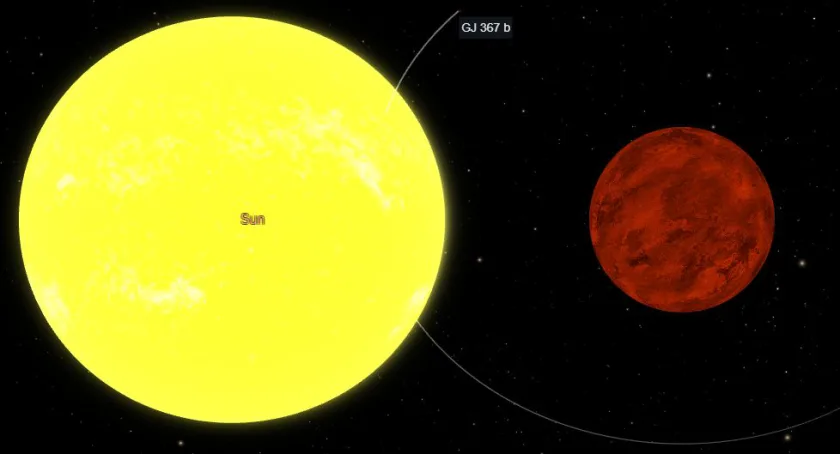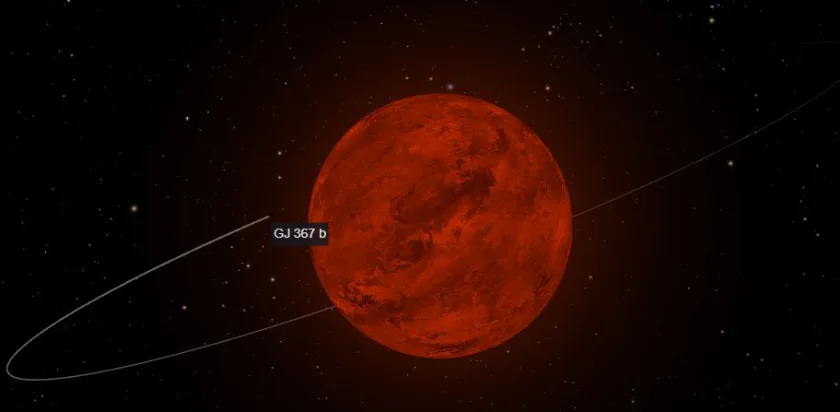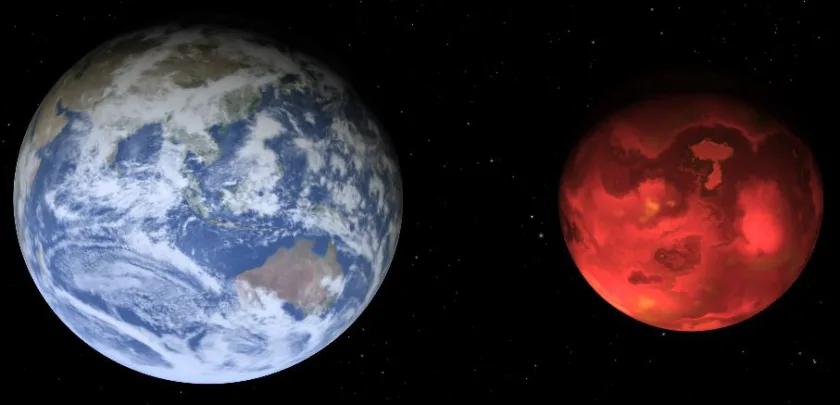
In an effort to explore the mysterious GJ 367 planetary system, an international team of astronomers embarked on a dynamic quest.
Armed with the High Accuracy Radial velocity Planet Searcher (HARPS), they set out to unravel the secrets hidden in the vastness of space.
A celestial gem shimmering in the distant skies
Astonishingly, this stellar system lies a staggering 30.7 light years away.
GJ 367 is also known by other names such as TOI-731 or TIC 34068865. Its brilliance rivals our very own sun. Even though, it’s only half the size and mass.
Recent observation surfaced that the stellar neighbourhood harbours not just one, but two alien worlds.
GJ 367 planetary system
Each of these newfound celestial wanderers is at least four times as hefty as our planet Earth. They appeared like cosmic companions, joining the ranks of the exoplanetary entourage.
First in line, we have the petite yet fast-paced GJ 367 b. This sub-Earth exoplanet completes its circuit around its host star in a jaw-dropping less-than-eight-hours!
With a radius approximately 0.72 times that of Earth. While weight is estimated to be 0.55 times relatively. It’s a world that challenges our very understanding of the cosmos.
Now, a team of astronomers, headed by Elisa Goffo from the University of Turin in Italy, has reported not one but two low-mass companions of this mesmerizing sub-Earth exoplanet.
These newfound companions have been brought to light through an intensive radial velocity campaign, courtesy of the mighty HARPS spectrograph.

NASA’s TESS Unveils Elusive Secrets of GJ 367 System
To add more cosmic depth to their investigation, the team enlisted the cutting-edge capabilities of NASA’s TESS (Transiting Exoplanet Survey Satellite), harnessing data from sectors 35 and 36. These two specific sectors, 35 and 36, have been part of TESS’s mission to uncover new exoplanets.
With these complementary observations, their cosmic vision expanded. Thus, surfaced more of the elusive secrets tucked within the GJ 367 system.
GJ 367 c and GJ 367 d Unveiled with Impressive Mass and Radii
GJ 367 c is the name given to the newfound celestial wanderer. Its minimum mass is equivalent to a whopping 4.13 Earth masses. And its predicted radius is about 1.6 times that of our Earth. This planet gracefully completes each cosmic circuit in a mere 11.5 days.
GJ 367 d, is the outermost sentinel of the system. It is at least six times more massive than Earth. The calculated predicted radius of GJ 367 d stretched to an impressive 1.7 Earth radii. And patiently, it completes a majestic orbit around its radiant host every 34 days.
In the study, scientists further investigated GJ 367 b. And consequently, refined their measurements of its mass and radius.
They determined that the planet has a mass of about 0.63 times that of Earth and a radius equal to 0.7 times Earth’s radius. The finding also indicated an extremely high density of 10.2 grams per cubic centimeter, suggesting the presence of an iron core within the planet.

Takeaway
In a nutshell, GJ 367 b, is super interesting! It’s the densest and tiniest ultra-short-period planet ever discovered.
The researchers are pretty excited about this discovery because it could give us a better idea of how these kinds of systems form.
Each discovery paints a new stroke on the canvas of the cosmos. And the universe unveils a bit more of its mysteries.
These enigmas invite us to explore, to dream, and to marvel at the splendour that awaits us among the stars. Let’s keep our eyes on them and see what other surprises they have in store for us!
Via: Phys.org



